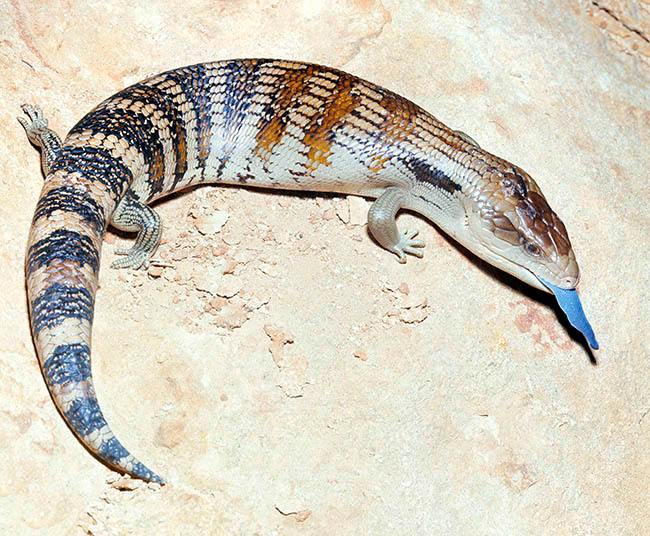What is Teliqua? All About this Reptile & Its Meaning

Do you know about teliqua? In the case of words, this one is also used for the numerology expressing 4. This one is also used for an animal species with a lizard or crocodile-type look. These were also named “northern blue tongue skinks.” It’s an animal (Teliqua scincoides) that is considered to be in the group of reptiles. Many people also collect them and keep them as pets. Within plastic enclosures, it can be easily kept. There sizes vary. There is also a life span of 15 to 20 years. However, they are naturally found on the Australian range. These are not a type of reptile that is commonly found everywhere.
Classification
| Kingdom | Animalia |
| Phylum | Chordata |
| Subphylum | Vertebrata |
| Class | Reptilia |
| Order | Squamata |
| Family | Scincidae |
| Genus | Teliqua |
Geographic Range and Habitat of teliqua scincoides
This reptile is actually available in the regions of Tasmania and Guinea; specifically, these are native to the Australia region. These are actually inhabitants of the region, which is made up of woodlands, semi-deserts, and scrublands. In terms of habitat, these are actually found in scrub forest, on grasslands, and in Savana. In these habitats, these are actually available in Australian areas.
Physical description
This one is famous due to the presence of its blue tongue. This tongue is also used for defense. When encountering the skin of teliqua scincoides, it shows that it is smooth in appearance. It looks like a fish due to the presence of scales on its outer side. Besides it all, its body is also carrying the colorations. It might contain different color pigmentations. This appearance of the colors makes it even more cryptic. This coloration becomes less intense when they reach the maturity stage. There is a hyoid skeleton that is present in them, through which their massive tongue is attached. They are also found to be cylindrical and have short legs. There is a waddle-type movement found in them. They move like this due to their possession of short legs.

Reproduction in teliqua scincoides
Actually, these are ovoviviparous. That shows the growth of their babies in the form of eggs that are not laid. These eggs stay in the mother’s body, and right after the completion of their development, they lay their young. That’s why they are more protective during their development. as there is no kind of risk while the growth is going on. No predators can attack them as well. There are females who give birth to 10 to 15 scincoids in a single reproductive cycle each time. There is an annual breeding system (cycle) found in them. Their birth size is including 90 to 130mm. However, the body weight is found to be between 8.4 and 20.7.

Food habits
Generally, these are considered to have the characteristics of omnivores. These blue skins are generally available on different kinds of foods. Even so, they are also feeding on small creatures, including insects. They also feed on various fruits and plant materials, as well as on other reptiles. They are also fed vegetables as well as dog foods.
Behavior and Ecology
They usually choose to walk or run, but their speed is slower due to their shorter legs. They are active during the daytime, but they will seek refuge at night. Mostly they feed on fungi, fruit, insects, flowers, snails, and other animals. There are many predators, including dogs, cats, large birds, mammals, goannas, snakes, and other reptiles.

Interesting facts about this story
- There is the presence of larger rear teeth in them that helps them to crush food materials.
- There are blood vessels located under the scales that are actually helpful in providing them with a warming and cooling effect.
- It is reported to have caused a death after eating and consuming poisonous toads.
- There blue tongue skink is going to protrude during their activities of defense.
Pronunciation and other meanings of teliqua
In the English dictionary, these words are generally use to represent mankind; clever and strong mean a combination of these qualities. Numerically, this is use to define the digit 4. Usually this letter is not present to be choose as a person’s name. However, if it is use as a person’s name, then they might contain the quality of this name, like a belief that other names carry too. They will be amusing, excellent, lucky, and transformative, according to their names. .
FAQs
1. What is the average life span of blue tongue skinks?
They have a lifespan of usually 15 to 30 of in between it.
2. Which reproductive pattern in found in teliqua scincoides?
These are following the patterns of ovoviviparous so it means there eggs are more protective through this and deliver after complete development.
3. Which common predators of blue tongue skinks does exist?
Generally the predators such as large birds, mammals, cats, dogs and other reptiles are consider to be there predators.
Conclusions
The teliqua scincoides are usually to have the blue tongue skink. They are highly present in the regions of Australia. Many people like these as they kept them at home too. Its reproductive cycle is highly protective due to the processing of ovoviviparous. With a higher lifespan they can be feed on different food materials. Economically they are not too much beneficial. For more interesting info must visit techstarlink.com





